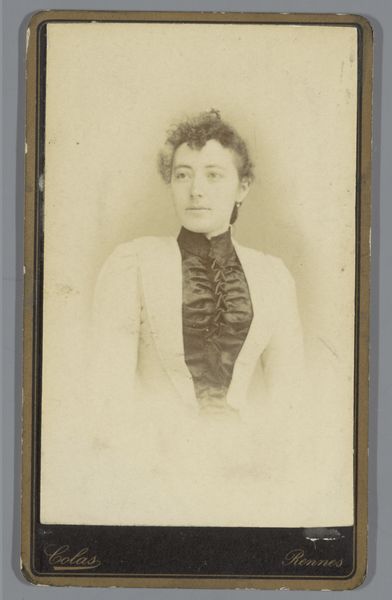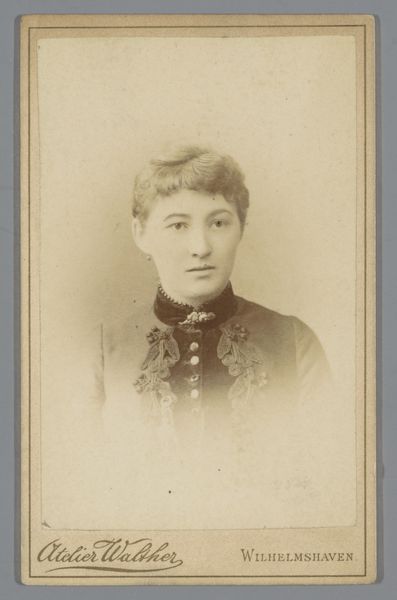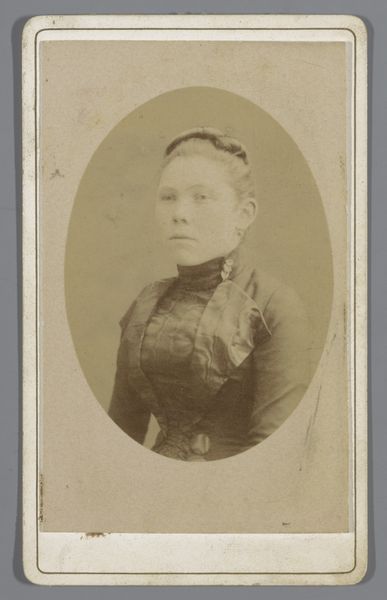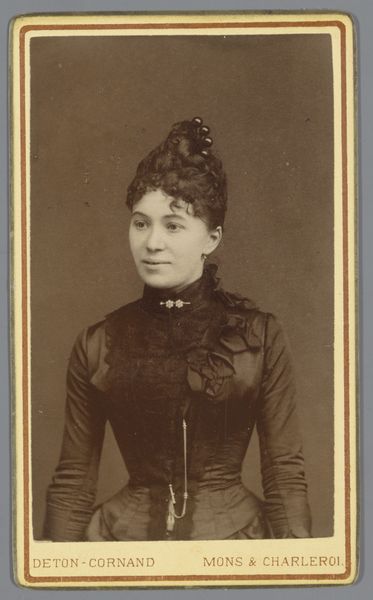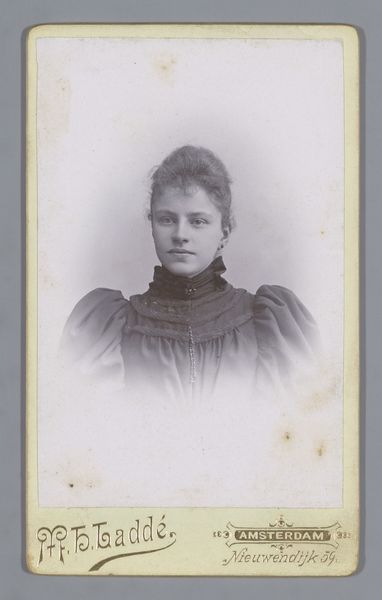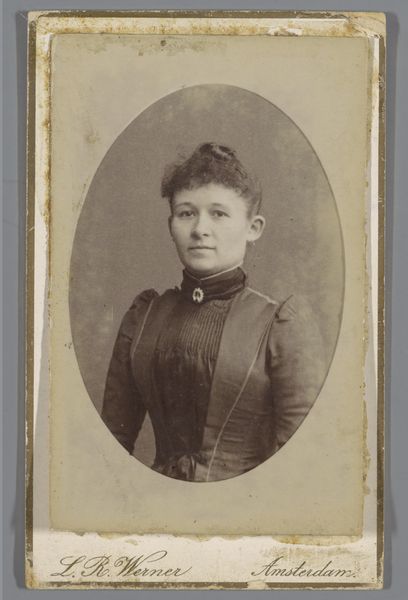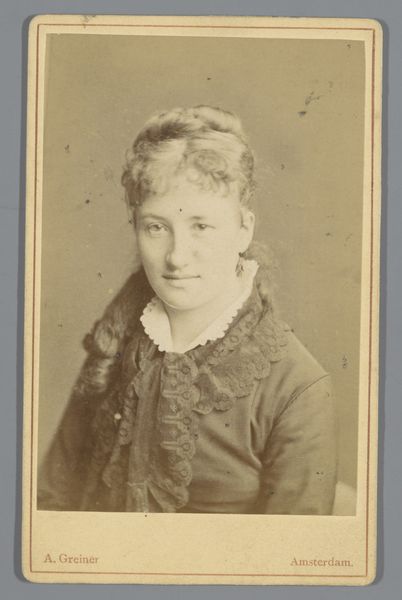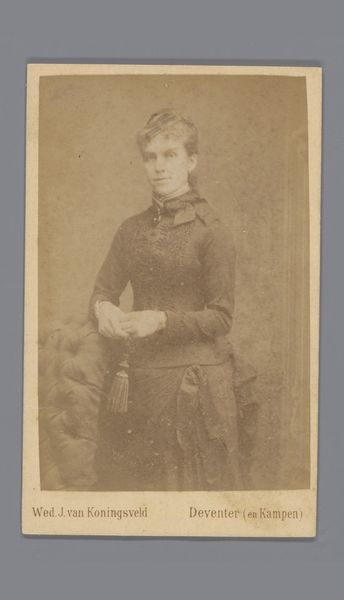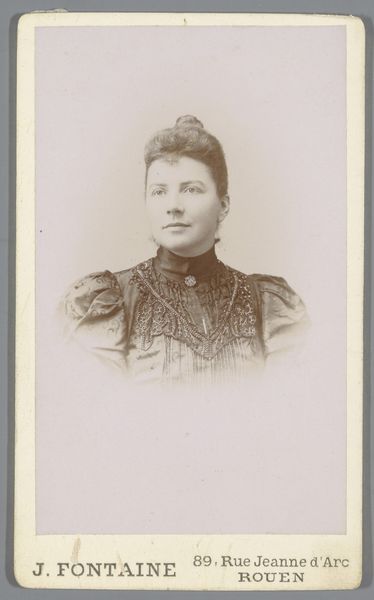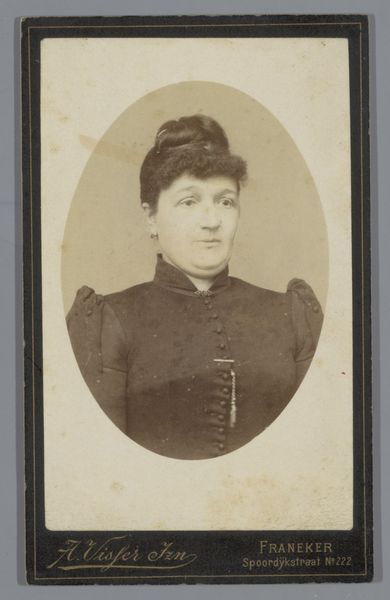
photography
#
portrait
#
photography
#
genre-painting
Dimensions: height 105 mm, width 65 mm
Copyright: Rijks Museum: Open Domain
Editor: Here we have "Portrait of an Unknown Woman" from somewhere between 1855 and 1885, by Atelier Walther, a photography studio. The photograph has a sepia tone that lends it an air of antiquity. What's striking to me is the subject's gaze; she appears confident but there's a trace of something else, perhaps melancholy. How do you interpret this work? Curator: What strikes me is not just her gaze, but the deliberate construction of this portrait, seemingly simple, within a complex social fabric. We must consider photography's role in democratizing portraiture during this period, making it accessible to a broader segment of society beyond the elite. This "unknown woman" suddenly has a presence, a document of her existence in a way previously unavailable to many women. Editor: So, you are suggesting it's more than just a portrait? Curator: Absolutely. The clothing, the hairstyle – these are all signifiers of status, identity, and perhaps aspiration. Think about the societal constraints placed on women during this era. Photography provided a space for self-representation, however controlled or curated. Her confidence could be a carefully constructed performance of empowerment. We must ask ourselves: What does it mean for a woman to have agency in the creation of her own image, particularly during a period of profound social change and what kind of statement could this photograph make? Editor: That's a powerful point. I hadn't considered the level of self-determination in what seems like a traditional portrait. Curator: It also raises questions about authorship. While Atelier Walther is credited, how much did the woman contribute to the composition? Was she an active participant, or a passive subject? Even the fact she is “unknown” to us adds to the intrigue, creating a gap we can try to bridge by examining the cultural context of the photograph itself. Editor: Looking at it now, there's definitely more depth to the portrait than I initially recognized. I appreciate you pointing out how gender and access intersect here. Curator: Precisely, and it is those intersections that often give portraits their profound voice.
Comments
No comments
Be the first to comment and join the conversation on the ultimate creative platform.



